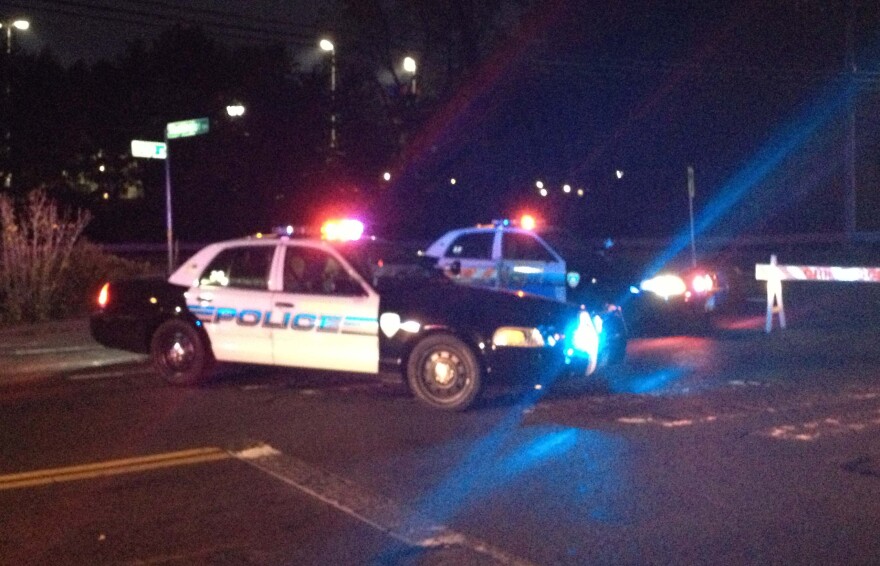In Connecticut 25 police officers have been singled out as stopping minority drivers at significantly higher rates than their peers, according to a new report commissioned by the state government and described by its authors as the most comprehensive of its kind.
The analysis, conducted by researchers at Central Connecticut State University and released Thursday, doesn't identify the 25 officers. Local police chiefs would not name them either, saying it would be unfair to do so based on what they called flawed data.
"It is important that these results be viewed as the starting point of a dialogue and not as conclusive evidence of wrongdoing on the part of the officer," the report says.
Eight of the 25 officers were in Hamden, a suburb of New Haven, and four were in Wethersfield, a suburb of Hartford.
Hamden Police Chief Thomas Wydra and Wethersfield Police Chief James Cetran denied their officers racially profiled drivers and called parts of the report misleading. They said the minority stop rates didn't take into account people who often drive into their towns from neighboring cities, which have much higher percentages of minority residents.
The analysis examined about 586,000 traffic stops made by officers in 92 municipal departments and state troopers from Oct. 1, 2014 through Sept. 30, 2015. It said the data do not prove officers were engaged in racial profiling.
Statewide, 14 percent of all traffic stops by police involved black drivers, when black people of driving age comprise nine percent of the state's population. Nearly 13 percent of traffic stops involved Hispanic drivers, when Hispanics of driving age comprise 12 percent of Connecticut residents. Those rates were about the same as in the traffic stop report last year, the first time Central Connecticut State University performed an analysis under the state's anti-racial profiling law.
But when researchers reviewed stops made during daylight hours, when they said officers could see the race and ethnicity of drivers, Hispanics were nearly 14 percent more likely to be pulled over and blacks were about 7 percent more likely to be stopped than they were at night.
The report also says minorities were more likely to get misdemeanor summons for speeding and other infractions, while whites were more likely to get written warnings.
The analysts said five municipal departments and one state police troop showed a "statistically significant racial or ethnic disparity that may indicate the presence of racial and ethnic bias." Those agencies include Bloomfield, New Milford, Norwalk, West Hartford, Wethersfield and state police Troop H, which covers the Hartford area.
David McGuire, legislative and policy director for the American Civil Liberties Union of Connecticut, said the report does confirm that "racial biases are still driving some traffic stops in Connecticut."
Michael Lawlor, state undersecretary for criminal justice policy and planning, said the report does not show widespread bias because most police agencies' minority traffic stop rates were within normal parameters.
Statewide, there were fewer than 10 complaints of racial profiling against police officers last year.
The report's authors say it is the most comprehensive statewide examination of police traffic stop data among the more than two dozen states that collect such information.
For the first time, the report also analyzed traffic stops by individual officers.
The 25 officers singled out in the report work for nine municipal departments and two state police troops that were identified in last year's report as having racial disparities in their traffic stop data. Those departments and troops have 935 officers combined.
In Wethersfield about 27 percent of town officers' traffic stops involved Hispanics, when only seven percent of town residents are Hispanic and of driving age. Cetran, the police chief, said the figures do not account for a large number of drivers from Hartford's neighboring South End, which has a much larger percentage of Hispanic residents, who travel to Wethersfield to shop.
Cetran said that when two zip code areas in nearby Hartford neighborhoods are added to the Wethersfield data, more than 50 percent of people are Hispanic and of driving age.
"I really feel we're being persecuted unfairly," Cetran said. "Until they get the ... information correct, they're giving out information that is creating problems between the community and the police that aren't there."
Wydra, the Hamden chief, said the eight officers from his town singled out in the report work in the southern part of town, which is visited often by residents of predominantly black neighborhoods in neighboring New Haven. He believes that wasn't factored into the report. He said the eight officers are good people who haven't received any complaints about racial profiling.

